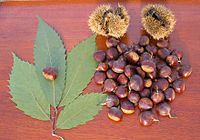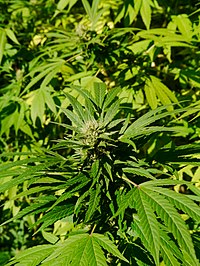
Genetic evidence that Chinese chestnut cultivars in Japan are derived from two divergent genetic structures that originated in China
Sign Up to like & getrecommendations! Published in 2020 at "PLoS ONE"
DOI: 10.1371/journal.pone.0235354
Abstract: The Chinese chestnut (Castanea mollissima Bl.) was introduced into Japan about 100 years ago. Since then, a number of Chinese chestnut cultivars and Japanese–Chinese hybrid cultivars have been selected by farmers and plant breeders, but… read more here.
Keywords: chestnut; japanese chinese; chestnut cultivars; hybrid cultivars ... See more keywords

Near-Hexaploid and Near-Tetraploid Aneuploid Progenies Derived from Backcrossing Tetraploid Parents Hibiscus syriacus × (H. syriacus × H. paramutabilis)
Sign Up to like & getrecommendations! Published in 2022 at "Genes"
DOI: 10.3390/genes13061022
Abstract: Hibiscus syriacus, azalea, is an important woody ornamental shrub planted throughout many temperate and subtropical regions of the world. However, flower size is smaller in this species than some of its relatives. To increase flower… read more here.
Keywords: syriacus; hybrid cultivars; hexaploid; flower size ... See more keywords

Phytochemical Profile, Mineral Content, and Bioactive Compounds in Leaves of Seed-Propagated Artichoke Hybrid Cultivars
Sign Up to like & getrecommendations! Published in 2020 at "Molecules"
DOI: 10.3390/molecules25173795
Abstract: The globe artichoke (Cynara cardunculus L. subsp. Scolymus (L.) Hegi) is a multi-year species rich in various classes of phytochemicals with known nutritional and pharmacological properties, such as polyphenols, sesquiterpene lactones, and terpenoids. Over the… read more here.
Keywords: seed; content; sesquiterpene lactones; seed propagated ... See more keywords